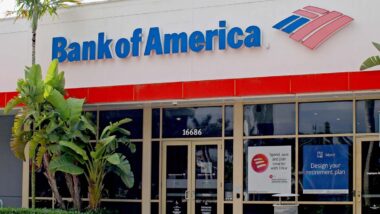Top Class Actions’s website and social media posts use affiliate links. If you make a purchase using such links, we may receive a commission, but it will not result in any additional charges to you. Please review our Affiliate Link Disclosure for more information.
When someone with student loan debt fails to pay their loan on time, it may go into default. Loans that are in default may result in financial consequences for the loan holder, including wage garnishment, or the withholding of the borrower’s take-home pay. However, there may be ways for people in default to rehabilitate their loans and stop wage garnishment.
When Do Student Loans Go Into Default?
Student loans go into default when the loan holder fails to make payments on the loan for more than 270 days. At this point, the loan servicer may decide to begin garnishing the loan holder’s wages. Student loan wage garnishment may result in up to 15 percent of the borrower’s paycheck being withheld to pay down the debt. The process for doing this may be different depending on whether the loan is held privately or federally.
Privately held student loans require the servicer to file a lawsuit against the borrower and obtain permission from a court to begin garnishing wages or seizing tax returns.
Federally held student loans may be garnished by the government without requiring the loan holder to file a student loan lawsuit or obtain permission from a court. Instead, the Department of Education is required to send a notice notifying the loan holder that wage garnishment will begin in 30 days. This notice must also provide loan holders with the opportunity to object to the debt, as well as the option to set up a voluntary repayment plan.
What Is Loan Rehabilitation?
Even after a student loan goes into default, loan rehabilitation is possible. Loan rehabilitation is a one-time option that allows borrowers to get out of default. It involves making a certain amount of timely payments over a period of time. If rehabilitation is completed successfully, the default will be removed from the borrower’s credit history, and the borrower’s wages will stop being garnished. The borrower will also be eligible for future loans or student aid.
What Is the Student Loan Rehabilitation Program?
The student loan rehabilitation program requires students to agree to make voluntary, reasonable, and affordable monthly payments for nine out of ten months. These payments must be made within 20 days of the payment due date. Under the terms of the program, “reasonable and affordable” generally means 15 percent of the borrower’s annual discretionary income, divided by 12. Discretionary income is the income that exceeds 150 percent of the poverty level guideline for the borrower’s family size and state.
Some borrowers may not be able to afford the initial monthly payment proposed by their loan servicer. In this case, borrowers may be able to ask their servicer to recalculate their monthly payment and factor in the amount of income that remains after their monthly expenses have been paid. For some borrowers, the adjusted payment amount may be as low as $5.
 What Happens After Student Loan Rehabilitation?
What Happens After Student Loan Rehabilitation?
If the student loan is rehabilitated successfully, the default status will be removed from the loan and the borrower’s credit history. Additionally, any wage garnishment will cease. Borrowers who rehabilitate their loans will be eligible for future financial aid, including additional student loans and options for repaying these loans including deferment, forbearance, different payment plans, and loan forgiveness.
Although rehabilitation may be a great option for people who have defaulted on their loans and are experiencing wage garnishment, the option is a one-time-only opportunity. If a loan is defaulted on again after being rehabilitated, a second loan rehabilitation is not an option.
Student Loan Rehabilitation vs Consolidation
Borrowers who have defaulted on their student loans and wish to get out of default have a few options available to them, including rehabilitation or consolidation. When deciding whether to rehabilitate or consolidate a defaulted student loan debt, there are several factors to consider, including the length of time you are willing to spend getting out of default, the amount you are realistically able to pay, and whether your wages are currently being garnished.
Student loan rehabilitation is different from loan consolidation in several ways. Instead of taking the current loan out of default, loan consolidation allows borrowers to consolidate one or more defaulted loans into a single new loan. Loan consolidation also allows borrowers who are in default to get out of default faster than by rehabilitating the loan over a period of ten months.
In order to qualify for loan consolidation, borrowers must either agree to pay the new consolidated loan under a repayment plan based on their income, or they must make three voluntary and consecutive monthly payments on their defaulted loan on time and in full. Borrowers who choose to make the three payments on their defaulted loan prior to consolidating may have more options when it comes to choosing the type of repayment plan they qualify for.
However, consolidation may not be the best option for workers whose wages are being garnished. If your wages are already being garnished due to your defaulted loan, you will not be able to consolidate the loan until the wage garnishment order has been lifted. Additionally, unlike loan rehabilitation, loan consolidation does not remove the record of the default from your credit report. Instead, the default will remain on your credit report for seven years.
Although debt collectors and loan servicers are allowed to contact people who have defaulted on their student loans, some borrowers claim that these collectors have violated the Fair Debt Collection Practices Act by attempting to contact them through their place of employment, or otherwise harassing them. American Education Services and FedLoan Servicing are both under investigation for potential abusive practices. Borrowers who have defaulted on their loans have legal rights protecting them from being subject to abusive practices by servicers or debt collectors. Victims who believe that their debt collectors have invaded their privacy or violated their legal rights may be eligible to hire an experienced attorney to review their case and determine whether they qualify to open a class action lawsuit investigation into the collection agency.
Join a Free Student Loan Wage Garnishment Lawsuit Investigation
If you had had your wages garnished by FedLoan or AES within the last six years, you may qualify to join this student loan wage garnishment class action lawsuit investigation.
This article is not legal advice. It is presented
for informational purposes only.
ATTORNEY ADVERTISING
Top Class Actions is a Proud Member of the American Bar Association
LEGAL INFORMATION IS NOT LEGAL ADVICE
Top Class Actions Legal Statement
©2008 – 2024 Top Class Actions® LLC
Various Trademarks held by their respective owners
This website is not intended for viewing or usage by European Union citizens.


 What Happens After Student Loan Rehabilitation?
What Happens After Student Loan Rehabilitation?












